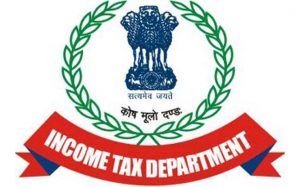Growth Trajectory of Direct Tax Collection & Recent Direct Tax Reforms

There are reports in a certain section of media that the growth of direct taxes collection for the FY 2019-20 has fallen drastically and buoyancy of the direct tax collection as compared to the GDP growth has reached negative.
These reports do not portray the correct picture regarding the growth of direct taxes. It is a fact that the net direct tax collection for the FY 2019-20 was less than the net direct tax collection for the FY 2018-19. But this fall in the collection of direct taxes is on expected lines and is temporary in nature due to the historic tax reforms undertaken and much higher refunds issued during the FY 2019-20.
This fact becomes more apparent if we compare the gross collection (which removes anomalies created by the variation in the amount of refund given in a year) after taking into account the revenue foregone estimated for the bold tax reforms undertaken, discussed below, which have a direct impact on the direct taxes collection for FY 2019-20. It may also be noted that in FY 2019-20, amount of total refunds given was Rs. 1.84 lakh crore as compared to Rs. 1.61 lakh crore in FY 2018-19 which is a 14% increase year-on-year.
Reduction in corporate tax rate for all existing domestic companies: In order to promote growth and investment, the Government has brought in a historic tax reform through the Taxation Laws (Amendment) Ordinance 2019 which provided a concessional tax regime of 22% for all existing domestic companies from FY 2019-20 if they do not avail any specified exemption or incentive. Further, such companies have also been exempted from payment of Minimum Alternate Tax (MAT).
Incentive for new manufacturing domestic companies: In order to attract investment in manufacturing sector, the Taxation Laws (Amendment) Ordinance 2019 has drastically reduced the tax rate to 15% for new manufacturing domestic company if such company does not avail any specified exemption or incentive. These companies have also been exempted from payment of Minimum Alternate Tax (MAT).
Reduction in MAT rate: In order to provide relief to the companies which continue to avail exemption/ deduction and pay tax under MAT, the rate of MAT has also been reduced from 18.5% to 15%.
The revenue impact of these reforms have been estimated at Rs. 1.45 lakh crore for Corporate Tax and at Rs.23,200 crore for the Personal Income Tax (PIT). Tax buoyancy on gross direct tax collection after adjusting the revenue foregone for the above mentioned tax reforms is as under:
(Rs. in crore)
| Gross Direct Tax Collection for FY 2018-19
(A) |
Actual Gross Direct Tax Collection for FY 2019-20
(B) |
Adjustment due revenue foregone for Tax Reforms undertaken during FY 2019-20
(C) |
Adjusted Gross Direct Tax Collection for FY
2019-20
(D)=(B+C) |
Growth rate in Gross collection for
FY 2019-20
(E) (i.e., D over A) |
Nominal GDP Growth rate FY 2019-20
(F) |
Tax buoyancy
FY 2019-20
(G)=(E/F) |
|
| Corporate Tax | 7,69,301 | 6,78,398 | 1,45,000 | 8,23,398 | 7.03 | 7.20 | 0.98 |
| Personal Income Tax (PIT) | 5,28,373 | 5,55,322 | 23,200 | 5,78,522 | 9.49 | 7.20 | 1.32 |
| Total | 12,97,674 | 12,33,720 | 1,68,200 | 14,01,920 | 8.03 | 7.20 | 1.12 |
Therefore, by removing the effect of the extraordinary and historic tax reform measures and higher issuance of refunds during the FY 2019-20, the buoyancy of total gross direct tax collection comes to 1.12 and almost 1 for Corporate Tax and 1.32 for Personal Income Tax. These buoyancies indicate that the growth trajectories of both the arms of direct taxes, i.e., Corporate Tax and PIT are intact and are rising steadily. Further, the higher growth rate in direct taxes as compared to growth rate in the GDP even in these challenging times proves that recent efforts for the widening of the tax base undertaken by the Government are yielding results.
Some of the recent steps taken in this direction, apart from those discussed above, are as under:
Personal Income Tax – In order to reform Personal Income Tax, the Finance Act, 2020 has provided an option to individuals and co-operatives for paying income-tax at concessional rates if they do not avail specified exemption and incentive.
Abolition of Dividend Distribution Tax (DDT) – In order to increase the attractiveness of the Indian Equity Market and to provide relief to a large class of investors in whose case dividend income is taxable at the rate lower than the rate of DDT, the Finance Act, 2020 removed the Dividend Distribution Tax under which the companies are not required to pay DDT with effect from 01.04.2020. The dividend income shall be taxed only in the hands of the recipients at their applicable rate.
Vivad se Vishwas – In the current times, a large number of disputes related to direct taxes are pending at various levels of adjudication from Commissioner (Appeals) level to Supreme Court. These tax disputes consume a large part of resources both on the part of the Government as well as taxpayers and also deprive the Government of the timely collection of revenue. With these facts in mind, an urgent need was felt to provide for resolution of pending tax disputes which will not only benefit the Government by generating timely revenue but also the taxpayers as it will bring down mounting litigation costs and efforts can be better utilized for expanding business activities.
Faceless appeals.
Document Identification Number (DIN).
Pre-filling of Income-tax Returns.
Encouraging digital transactions.
Simplification of compliance norms for Start-ups – Start-ups have been provided hassle-free tax environment which includes simplification of assessment procedure, exemptions from Angel-tax, constitution of dedicated start-up cell etc.
Relaxation in the norms for Prosecution.
Raising of monetary limit for filing of appeal.
Expansion of scope of TDS/ TCS.
To read full press release CLICK HERE.